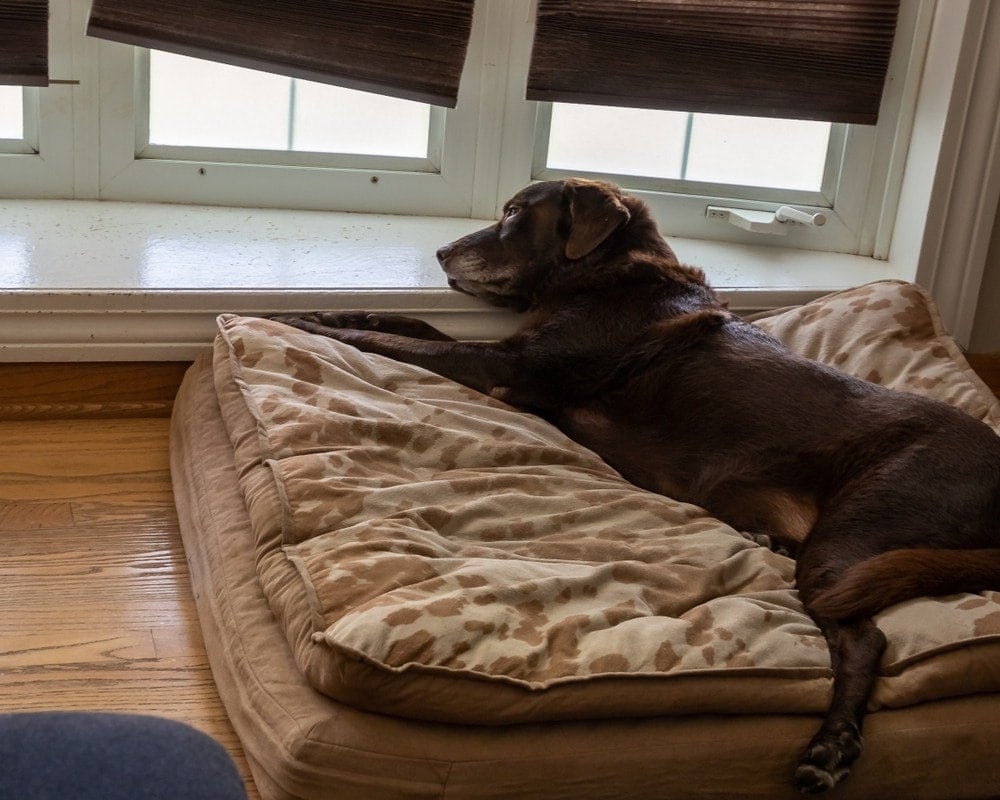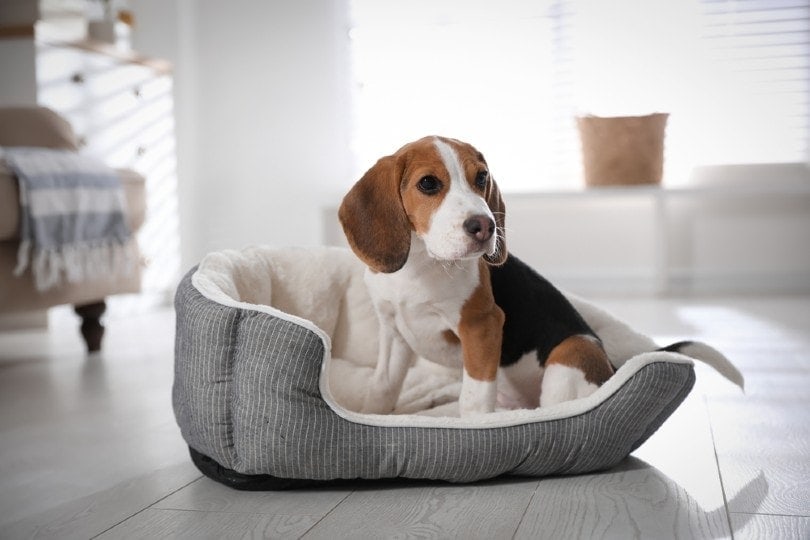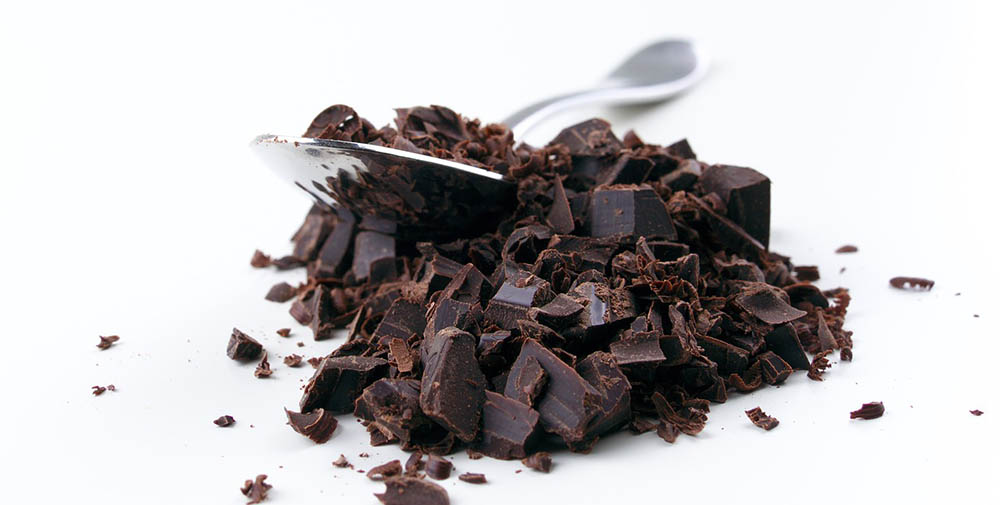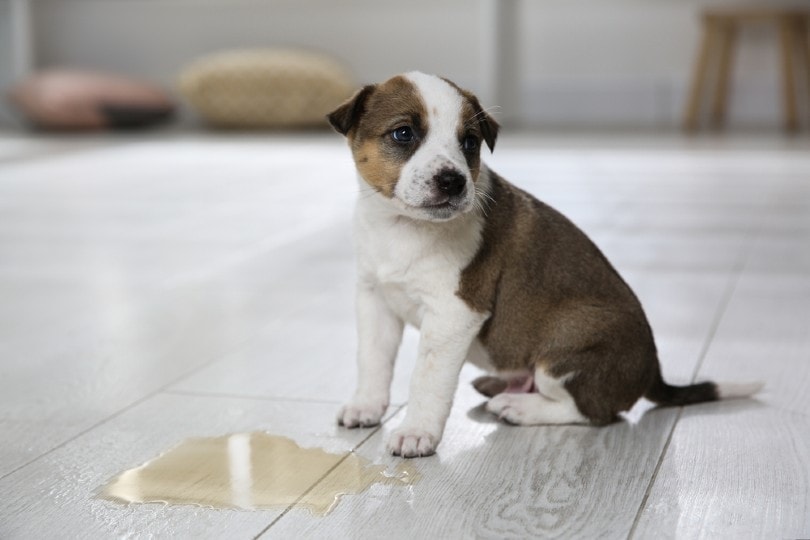If you have an older pooch who needs a comfortable and supportive bed to relax in, you are probably leaning toward either memory foam or an orthopedic bed. Dogs tend to develop arthritis or other health issues such as hip dysplasia in their golden years. Due to these conditions, they will need somewhere they can lay that will give them support, comfort, and peace.
The difficult issue is trying to figure out which material is better? This is where we step in to help. Below, we are going to go over the main differences between these two options and outline the benefits and drawbacks of each. With the information, you will be able to decide which one is best for your pet.
At a Glance:
The difference between memory foam and orthopedic dog mattresses can be hard to discern as they are the same, yet not the same. Here’s the skinny, though, orthopedic mattresses are not always memory foam, but memory foam beds are almost always orthopedic. We are guessing that may be somewhat confusing, so let’s take a closer look at what an orthopedic mattress is made of and what defines it.
Orthopedic Beds

An Orthopedic bed is any type of mattress that is designed to relieve pressure on the bones and joints of your dog (or yourself as it works the same with humans). When your pooch has arthritis, the tissue between their joints has broken down, and the bones are rubbing against each other. This can cause a lot of discomfort, swelling, and pain.
Orthopedic Describes an Effect, Not the Material
Orthopedic mattresses are meant to support each pressure point as your pooch lays on the bed. It allows them to evenly distribute their weight, so they will not have too much pressure on sore body parts such as the hips. The most important aspect to keep in mind is that orthopedic is a term used to describe the overall effect instead of the material it is made with.
Memory foam is a common material for these types of beds, but not always. When searching for bedding that will help your pooch be comfortable, what you want to look for is something that will even out their body weight over the surface…which we will talk about later.

What to Avoid
In the meantime, we want to talk about what you should avoid. Pet beds that are made with cotton, feathers, or other “fillers” are not going to be helpful. Anything that is made with loose material will not hold its shape or be as supportive. The other issue with this type of bed is it does not adjust to your pet’s movement.
If you have ever watched your dog “fluff” up pillows or a blanket, it is because they are looking for support and comfort. As they shift position, their movements will create more pressure on different parts of their body. They “fluff” to fix that problem.
When your senior pup is in pain, they are not able to do this themselves. They will need a material that will bounce back on its own. This will stop unnecessary strain on the sore joints and bones that need the extra padding as your canine makes himself comfortable.
Memory Foam Mattress

So, where does memory foam fit in? The majority of the time, memory foam mattresses are orthopedic. This is because they will retain their shape and support the body as your pet moves around. In short, it removes pressure points. You may have noticed that a lot of memory foam products are described as being orthopedic. As we mentioned, not all orthopedic mattresses are memory foam, but a large number of them fall into this category.
To narrow it down a bit more, let’s look at the individual parts of the mattress that make them orthopedic, and a good fit for your aging pet.
The Memory in Memory Foam
Ever wonder why they call memory foam memory foam? It is because the material remembers its original shape and will return to that status as soon as your pup gets up or moves. This is an important reaction to the material. Being able to return to its natural shape also allows it to continue to support your pup as they move around.
When your dog lays down, the memory foam will contort to its body, yet when they shift, the material will return to its normal state and provide support. This eliminates the “fluffing” issue as the bed itself will do that for them. If they were to shift while laying on a blanket, for example, any support they had would disappear.

Look at it this way, if you put a bowling ball on a memory foam bed it will sink, but it will not roll off the side. This is because the foam is bending to its weight, yet it’s also being supported on all sides. When you pick the ball up, the mattress will go back to normal. If you rolled the ball along with the mattress and stopped in a different spot, it would still stay put as the memory foam is still supporting it on all sides.
Comfort
The second reason this material is orthopedic runs hand in hand with the first, but it has more to do with your pup’s comfort level. This material easily contours itself around your pet’s body. Like the bowling ball, the foam adjusts its shape to support your dog. Ultimately, the mattress is not going to let your pet roll off the bed.
The mattress accomplishes this by contouring to their body. Do you remember the wine glass commercials? A glass of red wine is placed on the memory foam mattress while someone jumps up and down. This indicates that one person could toss and turn, and the other would not be disturbed. In actuality, what this points to is the idea that the foam will support all points of pressure on the bed without letting go of its support. No spilled wine, and no rolling bowling balls.
This is important for your pet’s joints as the more pressure on them the more painful they will be. The best way to ease the pressure…? Support! Not only that but an even distribution of their weight. Again, look at our bowling ball. As its weight is even, it’s not going to roll. With the support, it’s snug as a bug.
Durability
The last important aspect of memory foam is its durability. If you were to purchase a regular foam mattress for your uncomfortable pet, they may be comfortable for a time, but the material will eventually break down. This will cause all the “fluffing” issues we talked about before. Memory foam, on the other hand, is much more durable and long-lasting.
These beds will automatically regain their shape and quickly contour to new pressure. This is essential for your pet’s comfort. It also ensures that you will not be throwing money away by purchasing a bed that will break down in a matter of months.

Recap
As mentioned, most memory foam dog beds are considered orthopedic, but that does not mean other mattresses are also not orthopedic in nature. When trying to determine whether or not the option you are looking at is going to be good for your senior pooch, keep this info in mind.
If you are interested in a good orthopedic bed for your pup, there are a couple of good options that we would recommend. The FurHaven is a memory foam bed that will contour to your pet’s body and give their sore joints the support it needs. It also has a super soft outer layer to keep them warm and cozy. Take a look at this option in the link below.
Another great bed to keep your pup comfortable is the Frisco Orthopedic bed. Unlike our first option, this one has bolsters on three sides to give your pet some extra support, plus it allows them to rest their chin on the side to survey everything around them. Made with plush as well as memory foam, this is a great bed for sore bones.
Conclusion
We hope you have enjoyed the article above, and it has provided you with the info you need to find a comfortable bed for your senior pal. Just remember, an orthopedic bed is the way to go if your pet suffers from joint and bone discomfort. Although memory foam is a common material for this type of mattress, it’s not the only option. In our opinion, however, you are better off with memory foam especially if you are looking for something that will last the test of time.
Check out our reviews on dog beds here:
Featured Image Credit: 632imagine, Shutterstock











